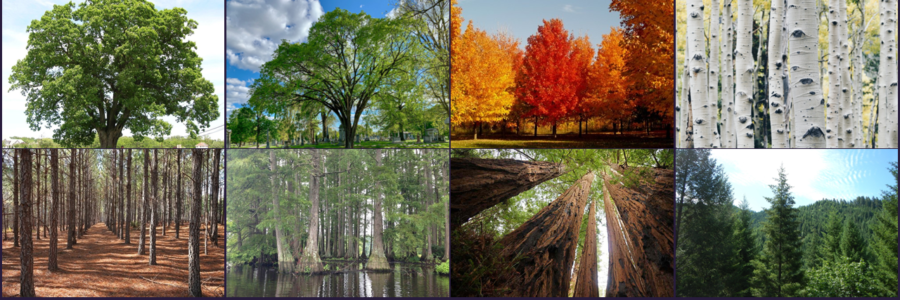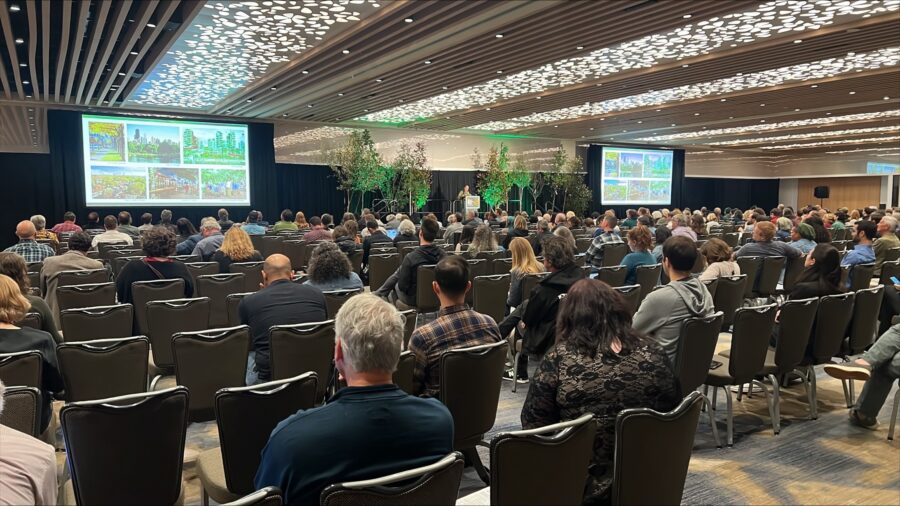By Trey Lord
It’s been nearly a month since the 1t.org US Summit and I continue to ruminate on the success of the event and key takeaways. The robust discussions left us with enough content to fill this year and next, along with plenty of next steps for our restoration and conservation community.
Before I jump into that, I would like take a moment to thank Salesforce for hosting us in their amazing office spaces, our rockstar expert speakers for providing us perspective and leadership, and all of you who were able to join us in New York for the Summit. From my vantage point, I observed many productive connections and discussions in and outside of the various thematic sessions, and I hope they all bear fruit (and sequester carbon).
Below are a few useful links that might further the efforts ignited at the Summit:
If you have not already pledged, you can submit a pledge to join the 1t.org US platform and take advantage of all of the benefits of this diverse community.
To guide my own path forward, I would like to challenge you all and myself with one my favorite quotes:
“Until you dig a hole, you plant a tree, you water it and make it survive, you haven’t done a thing. You are just talking.”
-Wangari Mathai
While many of you and your colleagues are performing these very acts, we would like to build out the Community of Practice to become a venue for these same catalytic and kinetic actions to take place as a collaboration. Within the short amount of time to achieve the 1t.org goal of conserving, restoring, and growing a trillion trees by 2030 — along with many of the human and capital resources in short supply — our community knows that we need to move beyond high-level principles unless they are prescriptive guidance to facilitate on-the-ground results. It is in this spirit we should drive ourselves and our community to push the envelope on what we can collaboratively achieve, specifically:
• Develop and synthesize scalable best practices and policies.
• Improve rigor, transparency, and reporting on our activities.
• Design and test new methodologies for implementation, financing, and capacity building.
In terms with less jargon, we would like to use the Community of Practice to identify bottlenecks, information gaps, inefficiencies, and ideas that need to be filled, researched, funded, and advocated for in whatever capacity our community is capable. We also need to recruit new and complementary members.
That being said, I would like to layout a few thoughts assembled from the Summit, our Stakeholder Council, and one-on-one discussions with many of you. These will guide our Community of Practice, Working Groups, and some opportunities for thought leadership for the next few months.
I also encourage you to push us on additional topics of interest. In frank terms, we all need more. Some need more funding. Some of us need more investment. Some need more staff. Some need more research. Some need more technical support. Some need more reputable places for investment with faster returns. We will look to collaboratively engage on these needs, as well as look for ways to connect prospective partners more efficiently (more on this very soon). Additionally, here are a few more overarching themes:
1. With a once-in-a-lifetime opportunity for funding from the Inflation Reduction Act (IRA) and Infrastructure Bill, our 1t.org US membership should help to design, facilitate, and leverage the moment and funding.
With the support of the US Forest Service and their state and local-level counterparts, 1t.org US has the generational opportunity to reshape our sector in a way that only several billion dollars can. This means that in addition to 1t.org US members working directly with these government agencies to leverage funding for their programmatic work, we have a direct line to help guide where and how the money is distributed to complement our programs and create and an enabling environment for further investments. This includes, but is not limited to, activities around engaging with rural landowners, financial package design and risk mitigation, wildfire remediation and recovery, urban and suburban planting and forestry, capacity building for local partners, educational campaigns and coordination, research and development for new technologies, and regional coordination for resource management. We also need to continue to advocate for this funding while showing its success and impact.
2. Forest carbon sequestration – and relatedly a flourishing voluntary carbon market – is but one of many measures of success in our efforts, but in and of itself is not the only success.
While much of the focus on forest carbon restoration has been on the use of voluntary carbon market, most of our experts and, more broadly the international consensus from both the scientific, policy, and economic sectors, is to look beyond carbon. While voluntary carbon markets are an important market-based mechanism that 1t.org US and our community should increasingly engage through advancing practice and standards for high-integrity carbon credits, we too will look to advocate for and facilitate the inclusion of other considerations such as biodiversity, water, and human-centered design. These activities should take place through market-based and other types of change-making practices throughout and beyond the existing value chains for climate and conservation interventions.
3. We must wholistically map, engage, and strengthen catalytic leverage points within the “seed to forest” value and supply chains at the global, regional and local levels.
With the growing and compounding challenges from climate change, ecosystem degradation, biodiversity loss, economic scarcity, and political will, we are increasingly in short supply of both time and resources. At every level, stakeholders of 1t.org US need to coordinate and find market, value, and supply efficiencies to put the right trees in the right place at the right time to replace lost ones and keep them alive and flourishing. 1t.org US and its stakeholders need to find, identify, and leverage points for forest restoration to maximize our collaborative influence and outcome longevity. We can do this through:
• Enabling policy environment at the global level through the UN and other multilateral institutions.
• Leveraging public-private partnership funding from the USFS to seed nursery microenterprises.
• Coordinating new workforces for seed collection and planting at the state-level
• Investing in MRV technological innovations to verify forest restoration additionality and permanence.
Much like the maxim of “right tree in the right place,” 1t.org US partners need the support to vertically engage their own value and supply chains to solve bottlenecks, inefficiencies, and misaligned incentives.
4. To ensure the successful restoration of forest ecosystems, we must be equally responsive to human and natural stewardship of forests.
Much like the broad diversity of stakeholders within the 1t.org US community, we must push harder with the explicit purpose of engaging and empowering a more diverse swath of partners on the ground. Whether they be minority communities in an urban area, a farming community in an agricultural region, indigenous communities on protected tribal land, or communities seemingly averse to engagement on forest restoration (golfers?), we should work collaboratively with these communities to identify best practices, key leadership contacts, cultural and social incentives, and ultimately find ways to maximize benefit-sharing and local agency. In all cases, the communities should be central to the long-term resilience of any forest conservation/restoration project as they are the best and most affected stewards. This is particularly important for those communities that have a cultural memory of displacement, such as Indigenous and African American communities. 1t.org US can build-on and scale international best practices, but it must be done at the behest of and through the informed consent of these communities who often have their own sophisticated local and traditional knowledge of forestry from which to draw and document.
For those unfamiliar or in need of a refresh, the 1t.org US Community of Practice is the overarching canopy under which are five standing Working Groups reside – Reforestation, Carbon Finance, Forest Policy, International Forests, and Urban & Community Forests. The Working Groups meet quarterly and consistent of presentations, discussions, briefings from government or business officials, updates on opportunities for collaboration or needs, and more. If you wish to be added to one or more of the Working Groups, you can find a link HERE. If you wish to present at one of the Working Groups, have a suggestion for collaborative action you wish to lead, or have other ideas, please feel free to reach out to me.
Trey Lord is Senior Technical Manager for 1t.org US. He can be reached at tlord@americanforests.org.



